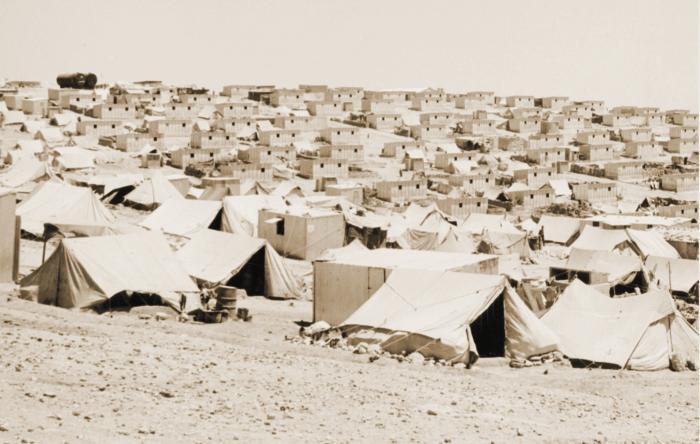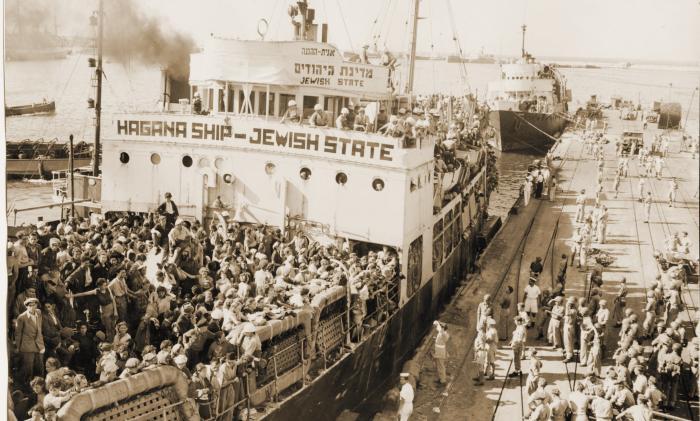
The so-called Gaza Strip is a small piece of coastline bordering Israel to the north and east. Hundreds of thousands of Palestinians were forcibly displaced by Israel during the ethnic cleansing of the 1948 war.
In 1947, when the United Kingdom controlled the region, it allowed the arrival of numerous Jews from all over the world and drew up a plan to grant them "a state of their own", dividing the territory of Palestine between Arabs and Israelis.
The decision was in response to the so-called Balfourt Declaration, when the United Kingdom, in 1917, promised to give Israelis living abroad Palestinian land to establish "a home for the Jewish people". These were the words that led to the creation of the State of Israel and deepened the historic conflict between Israel and Palestine.
That government did not own the territory of Palestine, nor did it have the right to determine the fate of its people, depriving them of their legal, human and political rights.
At that time, the Palestinian population of Jewish faith represented less than 10% of the total. After the First War, the Palestinians watched in astonishment as their lands were handed over to foreigners, to groups of European Jewish communities arriving on ships from countries such as Germany, Russia, Holland or Great Britain.
In November 1947, the United Nations General Assembly passed Resolution 181, which established the division of that territory (in which there were 1,200,000 Arabs and 600,000 Jews) into a Jewish State, an Arab State and the area of Jerusalem under international rule.
The following year saw a confrontation with several neighboring Arab states, in which Israel, with a powerful arsenal, prevailed and occupied 77% of the territory that Palestine had held under the British mandate, including most of Jerusalem. In that conflict, between 400 and 600 towns were destroyed, and more than 700,000 people were expelled to Gaza and the West Bank.
In 1949, the governments of Egypt, Lebanon, Jordan and Syria signed armistice agreements with Israel, fixing demarcations, and four joint UN commissions were set up to monitor the truce.
At the end of the conflict, the Israeli government began a deliberate program of forced expulsion to modify the territory, razing hundreds of Palestinian villages to build on them agricultural colonies called kibbutz, and cities for the Jews.

This institutional plan of Prime Minister David Ben Gurion was called Plan Dalet, to be executed by the Haganah, a paramilitary organization, and was officially adopted on March 10, 1948. The strategy was, and is, to forcibly expel the Arab population of Palestine in order to establish and expand the territory of the State of Israel.
The plan specified the villages to be attacked and the methods to be used to expel their inhabitants and destroy their communities.
Condemnations and protests against the Israeli government were not long in coming in the face of such hatred against the Palestinian Arab population. Now it turned out that those who had suffered in their own flesh the cruelty of Nazi-fascism, just because they were Jews, hated and brutally massacred the Palestinians.
The clashes continued for a long time, to such an extent that from June 5 to 10, 1967, the flame of the Six-Day War broke out between Israel and a coalition of Arab states, mainly Egypt, Syria and Jordan.
The war, which was favorable to Israel, among other things because of the support in armaments provided by the United States, resulted in the occupation of the Golan Heights, the West Bank, East Jerusalem, the Sinai Peninsula and the Gaza Strip.
This was followed by a slow process of negotiations between the parties involved to try to put an end to the violence in the region, culminating in the Camp David Accords in 1978, signed by Presidents Jimmy Carter and Anwar Al Sadat of Egypt, and Israeli Prime Minister Menahem Begin.
This pact sealed the peace between Egypt and Israel and, although it vaguely recognized the "legitimate rights of the Palestinian people", it did not include the establishment of a Palestinian state, nor Palestinian control of East Jerusalem, nor the right of return of Palestinian refugees.
Years later, the Oslo Accords i and ii were signed between Israeli Prime Minister Yitzhak Rabin and the Palestine Liberation Organization led by Yasser Arafat. For the first time since its 1967 occupation of the Palestinian territories of Gaza, the West Bank and East Jerusalem, Israel recognized the Palestinian right to self-determination and to establish two states.
In these agreements the Israeli government recognized the right to create a Palestinian state; to divide the occupied West Bank into three areas, one of them governed by the Palestinian Authority, until final treaties were reached on four fundamental issues: settlements, the status of East Jerusalem, the exact borders, and the status of Palestinian refugees and their right of return.
But Israel never wanted to accept an independent Palestinian state. For years its rulers try to delegitimize the struggle of the Palestinian movement and sabotage all attempts to reach a final settlement, as foreseen in the Oslo Accords.
It is said that for this peace initiative, Rabin was assassinated in 1995. At that time Likud Party leader Benjamin Netanyahu accused the Rabin government of being "far from Jewish tradition (...) and Jewish values".
Illegal settlers settled in the West Bank and Jerusalem territories, from about 110,000 in 1993 and 1994, have increased to more than 700,000 today. Palestinian ethnic cleansing, which began in 1948, has increased.
In 2023, Palestinian groups promoting armed struggle, and Hamas militants, confronted Zionist soldiers in response to the atrocities against the civilian population in the Gaza Strip and the general blockade Israel maintains on that territory.
In retaliation, the Israeli government began a bombardment of Gaza - which continues today - and launched a ground invasion to fight a supposed enemy that lacks regular troops, fighter planes, artillery and armored forces. It is not a war as some call it, it is genocide.
Just a few days ago, Netanyahu said that his government's goal is an offensive to reoccupy the entire Gaza Strip. Under the protective eye and complicity of the United States, since 2023 alone, it is estimated that more than 60,000 Palestinians have died in Gaza. Some have been killed, others died after bombardments, under the rubble of their homes; they have also died of hunger, cold or disease. The exact number will never be known.
What is known is the genocidal thinking of the Zionist authorities, such as Israel's Minister of Heritage, Amichai Eliyahu, who shamelessly stated: "The army must find ways more painful than death for the civilians in Gaza. Killing them is not enough.








